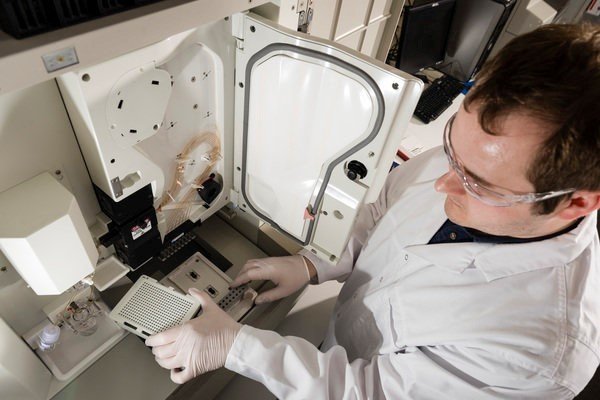
Human Blood Plasma N-Glycomics
Glycosylation is one of the most common, most complex, and most important posttranslational modifications of proteins. A large proportion of the proteome in eukaryotic systems is glycosylated. This highly diverse modification is involved in many cellular functions, including modulation and mediation of signaling events, cell-cell and cell-matrix interaction, and extracellular as well as intracellular traffic. Glycosylation provides a variety of functions, like the control of protein folding, the regulation of the immune response, and the modulation of physical, chemical, and biological properties of proteins of the blood circulation. Also many diseases like diabetes, cancer, rheumatoid arthritis, cardiovascular diseases, Alzheimer's disease, and Creutzfeld-Jakob disease are associated with changes in the glycosylation of proteins. To further increase knowledge and understanding in glycobiology the comprehensive investigation of the entire complement of sugars (glycome), large-scale clinical- and population-based studies, focused on biomarker discovery are needed. Such systematic glycomics studies can be viewed as a continuation of genomics and proteomics. In contrast to genome or even proteome analysis, glycome analysis is by far more challenging, due to the highly diverse nature of glycans.

Large-scale clinical- and population-based studies require high throughput (HT), high resolution, and highly sensitive but robust methods. Well-suited is, for instance, multiplexed capillary gel electrophoresis with laser induced fluorescence detection (xCGE-LIF). Regarding high throughput, the complete sample preparation procedure was established on a 96-well-plate format with a hands-on time of less than 2.5 hours. Combined with a fast xCGE-LIF based separation, a fully automated data analysis, and an in-house N-glycan database enables highly reproducible "real" HT analysis of protein N-glycosylation including structural elucidation of N-glycans in complex mixtures. In cooperation with Prof. Wuhrer at the Leiden University Medical Center (LUMC), the developed HT system is used for the glycoanalysis of human plasma N-glycome of clinical samples [1-4] with a focus on biomarker discovery.
The inter-individual heterogeneity of the plasma N-glycomes might mask disease-related changes in conventional large cross-sectional cohort studies, when a one-time sampling approach is used. In a pilot study, we could show that plasma N-glycome of an individual is remarkably stable throughout several years, and that observed small longitudinal changes are independent of seasons but significantly correlated with the individual lifestyle, environmental factors and events. Thus, monitoring of the plasma N-glycome of the individual over time has the potential to reveal even minor changes during disease progression [5].
